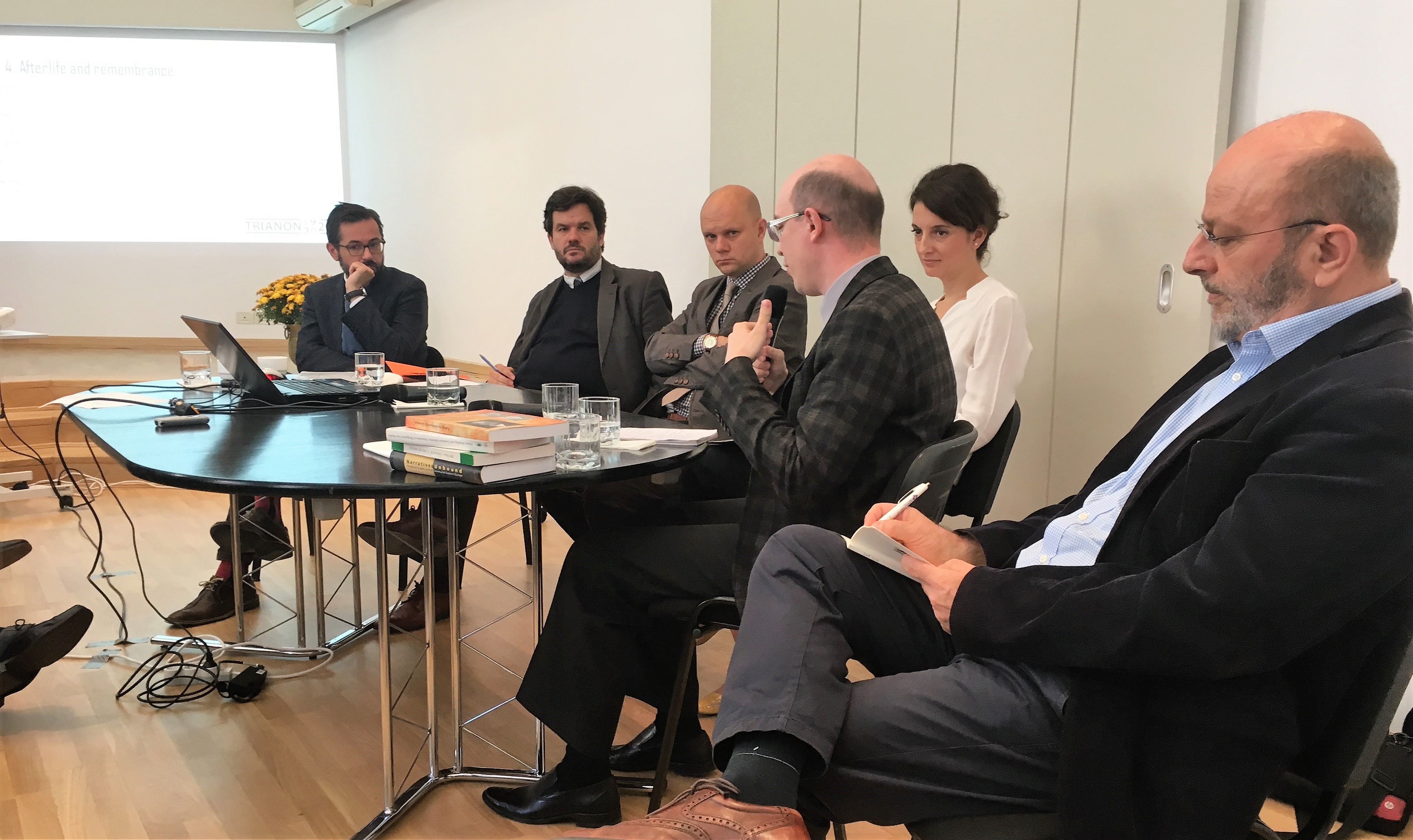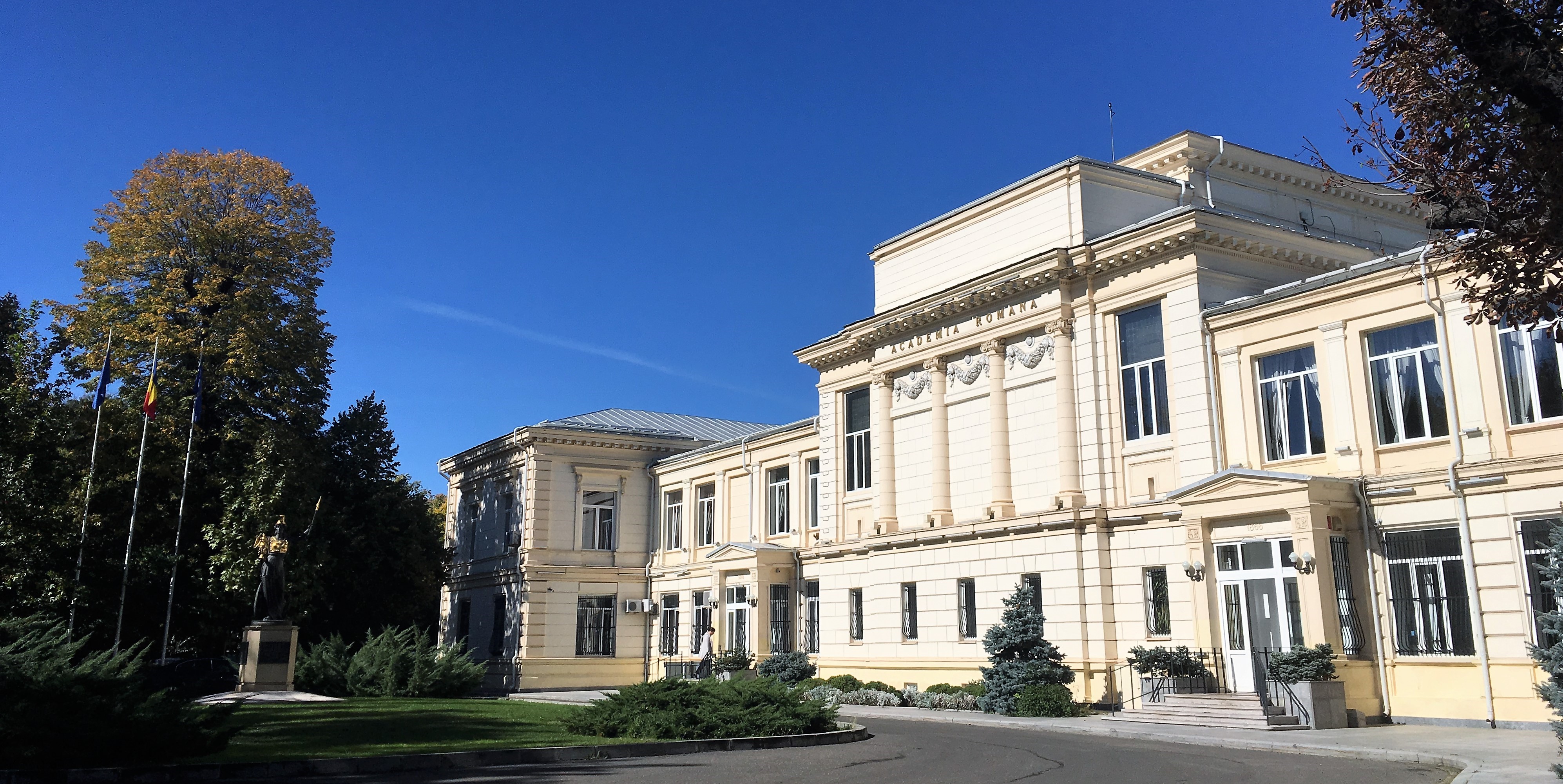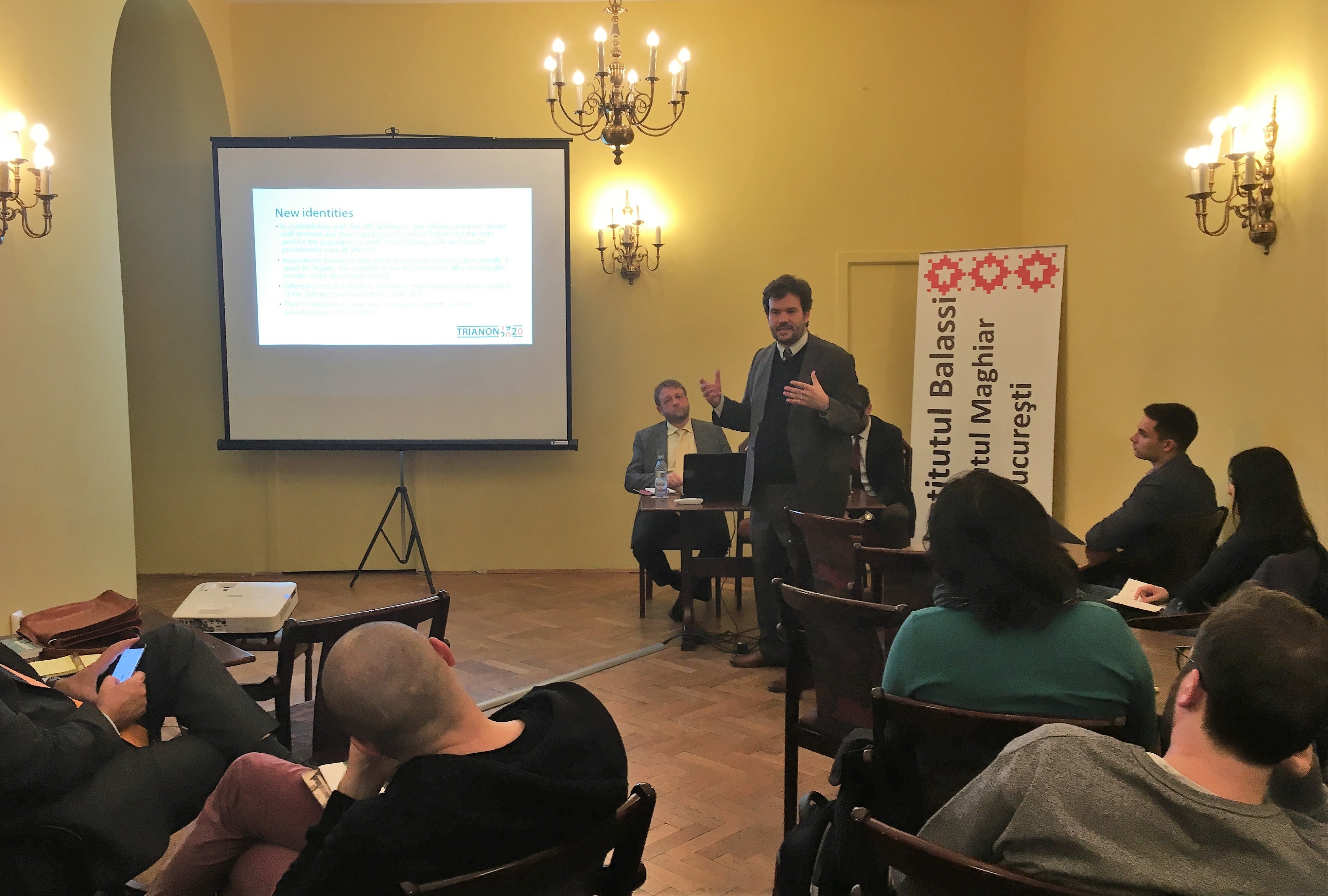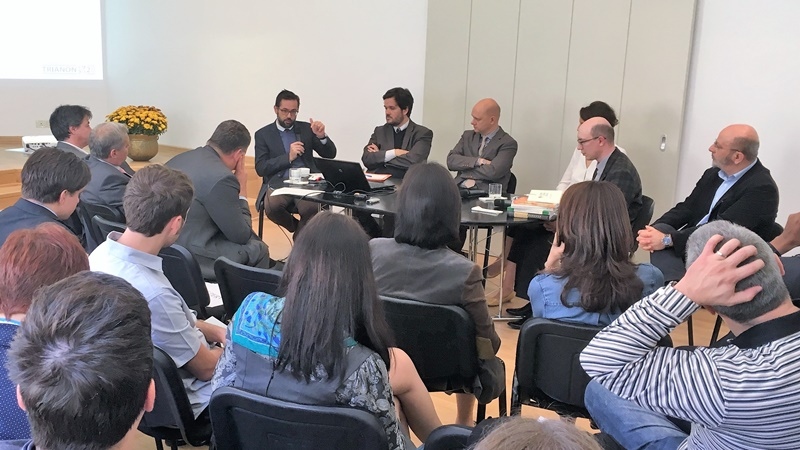First, on 10th October, there was a round table discussion at the headquarters of New Europe College with the title The Burden of (Over)interpretation – Layers of Trianon in Academia Cultural Productions. Following Andrei Pleșu's and Ioan Stanomir's words of welcome, Balázs Ablonczy, the head of Trianon 100 research group, introduced the concept of the 'Momentum' program of the Hungarian Academy of Sciences and the four pillars of Trianon 100 project that commenced in 2016 within the framework of Momentum. Trianon 100 has attracted much attention in Romania, also. Ablonczy also talked of previous research on the Trianon Treaty. Subsequently, Gergely Romsics presented methodological traps in the light of his own research (that is Trianon in Hungarian foreign policy thinking). He also pointed out possible ways to avoid such traps and that this would reinvigorate research. In conclusion, he expressed his hope that by 2021, that is the time Trianon 100 ends, we will go beyond national apprach and in place of monolith discourses have many smaller Trianons, which will be easier to handle.

The first commentator was Silvia Marton, a political scientist. She explained that the Trianon issue concerns both Hungary and Romania: the former had to handle the burden of integrating territorial loss, while the latter had to integrate territorial gain. The fact that the Trianon Treaty did not bring an end to the problem of national minorities held both states captive. Moreover, she emphasized that academic research projects are important because they have an impact on public consciusness and public opinion. Then, Sorin Antohi, historian of ideas, said that in Hungary the issue of Trianon is a subject of more lively and nuanced internal debates, including historiography, than in Romania. Since ethnic nationalisms that were waning around 2000 are gaining strenght again, there is a need for multilateral conversations and debates. For these to happen, it is indispensable that we identify and become conscious of the problems that "have no solution". Andrei Cușco suggested that the scope of the issue should be extended regionally to include Bessarabia and Moldova, and he called attention to the role of "memory political activists". Regarding the popularity of actors that use history as an instrument he stressed the responsability of professional history writing in shaping the public sphere. If historians leave that space others will fill the void. The discussion that followed these contributions and comments included members of the audience and mainly continued to revolve around the latter topic.

In the afternoon, representatives of the Romanian Academy of Sciences (Ionel Valentin Vlad, Romina Mihalache, Mária Pakucs, Cornel Sigmirean, Pompei Ciocean, Alexandru Ghișa és Loránd L. Mádly) received members of the research group. The president of the Academy, Ionel Valentin Vad, opened the fruitful discussion by greeting researchers from Hungary. Subsequently, Balázs Ablonczy presented the concept and work plan of Trianon 100. During the discussion, both parties expressed that they are committed to continue professional discussion and for future cooperation. Moreover, they shared the view that 'classic' themes and paradigms should be overcome. Finally, there was agreement about exchanging publications of Trianon 100 and publications of Romanian Academy of Science related to the centenary.

In the evening, Balázs Ablonczy and Gergely Romsics gave English language lectures at the event of the Hungarian Institute in Bucharest entitled Behind the Front. Botond Zákonyi, Hungary's ambassador to Romania introduced the lectures and historian Florin Țurcanu moderated the event. The title of Balázs Ablonczy's presentation was Shaping the New Magyar – Post-WWI Refugee Identities and the Birth of the Szekler Cult in Hungary. He began by sketching up the European and Hungarian context of research on post-World War I refugees. Then, he discussed problems regarding integration of Seklers that fled from Transylvania and relocated to Hungary along with the formation of the Cult of Seklers and the related "myth". Gergely Romsics's paper (Intimations of Trianon – Pessimism in Hungarian Foreign Policy Thinking in the Age of Reform and 1848) traced how Trianon became a key phenomenon that determined Hungarian foreign policy thinking in the 1900s and one that has impact even today. A questions and answers session and reception closed the event.






